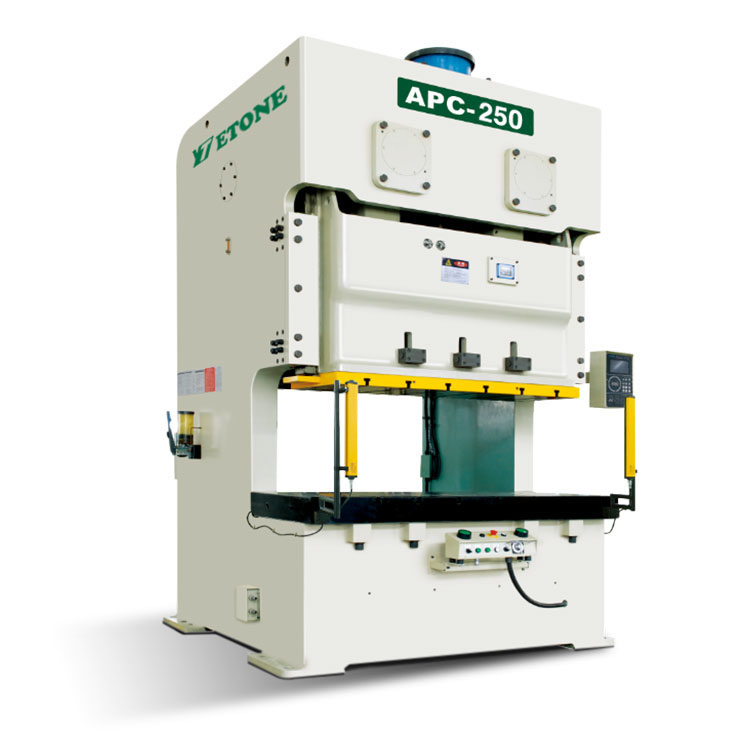There are several ways to determine whether the two crankshafts of a double crank press are synchronized:
1. Observe the movement of the crankshafts
Visual inspection: Observe the operating status of the double crank press to see whether the movement of the two crankshafts is coordinated. If the two crankshafts are not synchronized, the machine may not run smoothly or abnormal noise may be heard.
Use high-frequency video or high-speed camera: By shooting the movement of the crankshafts with high-speed video equipment, the synchronization of the two crankshafts can be analyzed more accurately.
2. Measure the phase difference of the crankshafts
Use sensors: Encoders or angle sensors can be installed on the two crankshafts to measure the actual angles of the two crankshafts. By reading the signals of the two sensors, the phase difference between the two crankshafts can be calculated to determine whether they are synchronized.
Oscilloscope: Connect the encoder signal to the oscilloscope and observe the waveforms of the two crankshaft signals. If the waveforms are synchronized and there is no obvious phase deviation, it means that the crankshafts are synchronized.
3. Use a vibration analyzer
When the double crank press is running, the vibration of the machine body is detected by a vibration analyzer. If the two crankshafts are out of sync, the vibration analyzer will show abnormal vibration waveforms, especially if the frequencies do not match.
4. Check gears and synchronizers
If the press drives the two crankshafts through gears or synchronous belts, you can check the meshing of the gears or the tension of the synchronous belts to ensure that they are not loose or worn.
Check the wear of the synchronizers regularly to ensure that the two crankshafts maintain consistent speed and synchronization through the synchronizers.
5. Check the working status of the press
Unbalanced load: If the two crankshafts are out of sync, it may cause unbalanced vibration when the press is working, or uneven pressure during operation. Therefore, monitoring whether there are abnormal load fluctuations during the operation of the press can indirectly determine whether the crankshafts are synchronized.
6. Use system software
Some modern dual crankshaft presses are equipped with control systems that can monitor and adjust the crankshaft synchronization. If there is control software, you can check the synchronization parameters in the software to check whether the system shows synchronization abnormalities or alarms.
7. Listening to judge
If the equipment noise is uneven, especially when the press is working, there is an irregular knocking sound or friction sound, which may also be caused by the crankshaft being out of sync.
Summary: The most accurate method is to use precision equipment such as sensors, vibration analyzers or encoders for synchronous detection. Simple visual inspection and listening judgment can be used as a preliminary screening method, but for equipment with high precision requirements, it is still necessary to rely on professional equipment and systems for accurate testing.
